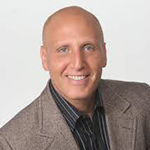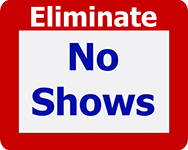The 100 Year Lifestyle

Learn about The 100 Year Lifestyle, a lifetime of health and wellness from the author himself.
Put a Stop to Memory Management and Missed Visits For Good!

How Do You Keep Track of No Shows for Your Chiropractic Practice? A Chiropractic Practice relies on separate reports and paper notes for following up on patient no shows. Who’s responsible to call the patient when they miss their appointment. Do they call right away or do they put it off? Who follows up with that person to make sure that they did it? Imagine never using a report to find out who missed their appointment. Imagine a tool that tells your staff exactly who to call and for what reason. Imagine that this process was automatic. Imagine 100% follow-up with every patient. Imagine the increased revenue for your Chiropractic Practice when you re-schedule every no show. Well, imagine no more. The tool is called Genesis Workflow and you can learn about it in this 20 minute webinar. It will be time well spent.
The Loss that Led Me to Focus on Patient Experience in Chiropractic

In chiropractic school, we are taught to examine, identify problems, create care plans, and to adjust patients. A lucky, or more prepared, few of us may have taken outside seminars to learn about strategies to bring more patients into our office, billing tactics to increase revenue, or practice management techniques. Yet, for all that we learn, the hours and years we put in to become Doctors of Chiropractic, we are never taught the most important part of having a truly successful business. We’re never taught to focus on the patient experience. Just out of chiropractic school, I was no different. I was running what I believed was a successful practice. I was helping a lot of patients and making a lot of money.. At the same time, I was trying to wear too many hats – business owner, staff manager, doctor. Things were falling through the cracks without me knowing until it was too late. I will never forget the day one of my patients came in and told me he was thinking of killing himself. No doctor is every really prepared to hear something like this, much less, a young doctor, still learning. My patient’s name was Chris and he had come to see me for low back pain, something chiropractors see every day. He had received his report of findings, had proceeded with care, and was getting great results and relief from the pain. At his words, I felt shock. I asked what had happened. The story he told me was incredible. After coming to the class that I held for new patients, he had decided to turn his life around. Hearing the chiropractic message and learning how his health affected every aspect of his life as well as his family’s life, he had made a life-changing decision. He quit drinking. He quit drugs. He was going to get healthy for his wife and children and he was going to do it cold-turkey. But now, he felt like taking his own life. After listening to Chris’ story, I was amazed that he had been affected so deeply by the chiropractic message and thankful that he had truly understood it to the point that he was determined to change his health to improve the future for himself and his family. And, I’ll admit, I was proud that my class, my words, had been good enough to change a man’s life. Yet, how could someone who had understood the message on such a deep level now think of killing himself? Chris and I spoke about what he was feeling and how, after the years of punishment his body had been through, it was natural to have difficulty trying to achieve homeostasis again. I explained how the chemicals in his system had been affecting his whole life, including his thoughts and how things were now trying to balance out as his body fought to move toward health. He understood. He got it, just like he did the chiropractic message, and we continued care. Then came the day when I realized that Chris had not been in for a visit in a while. Chris had understood the chiropractic message so completely that he should have been a patient for life. I pulled his chart to find out what had happened. That is when it became clear that once again, something important had fallen through the cracks. Chris had missed appointments, yet we had not followed up with him. His care plan had expired and his billing was not in order. These things that are so vital to patient retention had been missed. I immediately called Chris to find out how he was and to set up an appointment for a follow-up. That is when I found out that Chris was dead. He had taken his own life, just like he had talked to me about. That is when I knew with complete certainty that the systems we had in place were not enough. We tried to call patients who missed appointments, follow-up on care plans, pre-arrange billing with patients, and so many other tasks every single day. Yet, sometimes, my staff became overwhelmed or simply forgot. Other times, they would give up calling a patient who had not responded. And, so many of our systems relied on memory, leaving my staff and I to juggle all of the responsibilities, hoping no one dropped the ball. We only knew to follow-up with patients when I or one of my staff realized someone had not been in to see us for a while. We only knew to check on insurance claims when someone remembered we had not been paid. I knew that other industries used different technologies and software to manage the customer experience. Yet, the Chiropractic profession had no software to manage the Chiropractic patient experience effectively. There were many chiropractic software companies and practice management softwares available. However, not a single one broke down the patient experience into manageable tasks. And, not one offered one simple daily report to let the doctor know whether the necessary tasks had been performed. Instead, they all forced the doctor to wade through piles of reports, to check each individual aspect of the practice, an ineffective and time-consuming chore, at best. To find a solution, I had to go outside of the chiropractic profession, to find out what big businesses use to manage the customer experience. Since that time, I have dedicated myself to finding a better technology to break down and manage every aspect of the patient experience and making it available to chiropractors. And, so that I would never forget the man who first opened my eyes to the necessity of managing the Chiropractic patient experience, I named my son Christian in his honor.
Documentation | All Facets of Patient Care
Right at Your Fingertips Will Dr. Ben be thrilled with the Genesis Travel Card … or overwhelmed? “So did you finally get to see your friend, Steven?” asked Luisa on Thursday morning. “Yes, I did – we’ve both been so busy for the last few months and it was great to have a chance to catch up,” said Dr. Ben. “In fact, he told me about the new software they’re using at his practice. It’s helping them with their patient notes in particular – the entry is fast and accurate, and the system lets them know if there are any problems or areas of concern with the patient’s record.” Luisa regarded Ben hopefully. “So I expect you’ll be making a phone call to our good friend Charlie today?” she asked. Charlie was their Genesis coach. “You bet I will be,” said Ben. “Right after I get my coffee!” A few minutes later, Ben called Charlie and, after some small talk, they settled down to business. Charlie directed Ben to the test system, and after giving his screen a quick glance, Ben was ready to learn more. “So my friend Steven was raving about how his office has managed to cut down on their time entering patient notes all while increasing their accuracy,” Ben said. “I’d like to see how this might work for us.” “Of course, Ben, I’ll be happy to take you through it,” Charlie said. “To begin, I’d like to emphasize that our system takes all the facets of patient care and enables you to see it just as you would look at your patients. Just as you wouldn’t just only one symptom of a complex medical condition, we wouldn’t want your practice to see just one part of your patient’s record at a time. You can treat a patient most successfully if you can see his or her care plan, visit notes, appointments made and/or missed, where in the insurance cycle the patient is … with Genesis, you can really have every detail at your fingertips.” “That certainly sounds good – can you show me around a bit?” “Of course – let’s have a look around the Travel Card!” Charlie said. “First, you can see a column of patient visits down the left side. You know what’s really cool? Missed appointments are marked in red and that’s extremely valuable information to have at a glance.” “Have you ever had a patient who completely flummoxed you? Perhaps they’re not getting better, or maybe they’re getting worse – and you’re starting to think that maybe it’s your fault?” continued Charlie. “Well, if you were using Genesis, you’d see easily that, perhaps, this patient was missing one or two appointments each week, or month. Maybe you don’t realize it because you’ve got a lot of patients and because memory management doesn’t always kick in until there’s an issue.” “Sure, with our patient load I don’t always know how often a patient is supposed to be coming to see me,” admitted Ben. “If I don’t have an easy way to see if they’re showing up or not, I won’t know if they’re getting the care I think they need.” “Right! Now look at the bottom left-hand side of the screen. There’s a button you click when you need to add a picture or file,” Charlie said. “Now look at the top for the billable codes: ICDs on the left – we recommend that method if you use XMR notes to enter a diagnosis using the assessment tab – and CPTs on the right.” “Well that seems pretty straightforward,” said Ben. “It sure is! If you’re not going to use XMR notes, you just have to go to the diagnosis tab, select the area on the left and then choose the diagnosis code you need. Same for procedures – select the area or type on the left, and the procedure code from the right.” “Mmm hmm,” Ben said. He was surprised how easy this was to follow. He had expected to be more intimidated. “Now when you bill, if there are any issues, you’ll get a message in red and a pop-up alerting you to possible problem, maybe with validation, or perhaps the service date is out of the care plan date range,” Charlie said. “We even color code the billing section so that you’ll know if you’re in the insurance phase, cash phase or if the visit is free.” “But is there a place where I can enter notes that are for my own purposes?” asked Ben. “What if I have a conversation with my patient that I don’t need to document for insurance purposes – I just want to make sure I have important information readily available?” “If you look to the right of the screen, you’ll see rectangular boxes – we call them ‘sticky notes,’” said Charlie. “They’re like Post-It Notes where you can document reminders for yourself, personal information the patient shared with you or perhaps even some thoughts for the next phase of the patient’s care.” “This is incredible,” said Ben. “By having all of this information right at my fingertips I feel like I could really maximize my time with my patients and much less time in the system.” “That’s the whole point,” said Charlie. “By connecting all facets of a patient’s care, scheduling, billing, personal notations, history … all of that is critical to ensuring that patient gets the best care possible.” “Well let’s not waste any more time,” said Ben. “We’re ready to put your system to work for us!” Dr. Ben is ready to launch his next Genesis adventure! Disclaimer: For HIPAA compliance, all characters appearing in this post are fictitious. Any resemblance to actual persons or actual events is purely coincidental.

